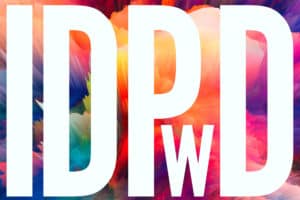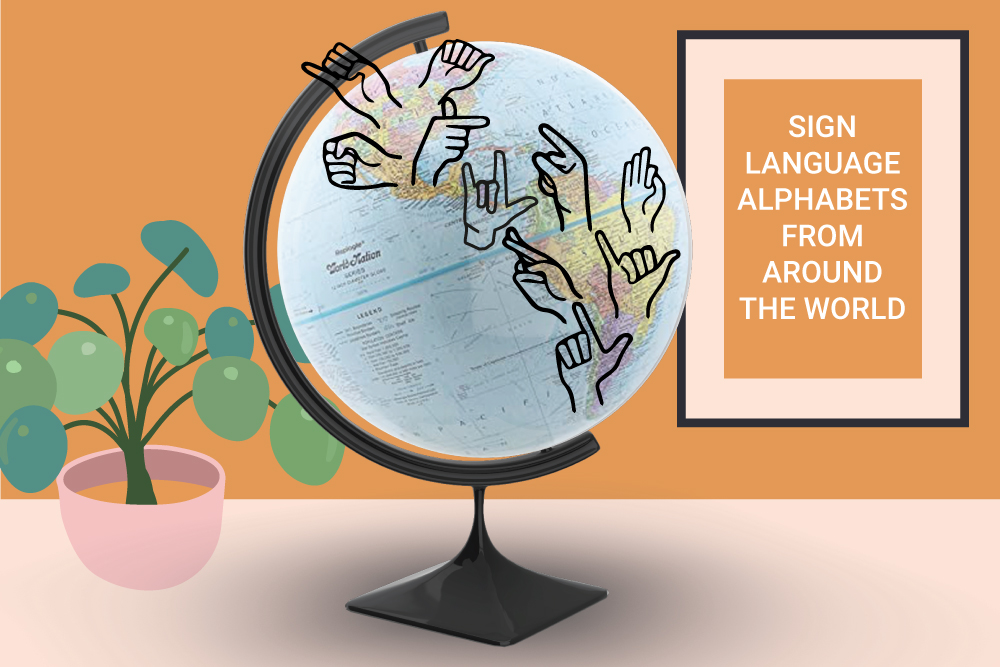
Sign Language Alphabets From Around The World
Let’s take a trip around the world to explore sign languages, their stories and their finger alphabets. The journey to communicating globally begins here!
Sign language is a visual means of communicating through hand signals, gestures, facial expressions, and body language.
It’s the main form of communication for the Deaf and Hard-of-Hearing community, but sign language can be useful for other groups of people as well. People with disabilities including Autism, Apraxia of speech, Cerebral Palsy, and Down Syndrome may also find sign language beneficial for communicating.
And as you will see in the different languages below, it has even had other uses throughout history.
Not a Universal Language
There is no single sign language used around the world. Like spoken language, sign languages developed naturally through different groups of people interacting with each other, so there are many varieties. There are somewhere between 138 and 300 different types of sign language used around the globe today.
Interestingly, most countries that share the same spoken language do not necessarily have the same sign language as each other. English for example, has three varieties: American Sign Language (ASL), British Sign Language (BSL) and Australian Sign Language (Auslan).
Basics of Alphabets and Fingerspelling
Most people start their sign language journey by learning the A-Z or alphabet equivalent in sign form.
The use of the hands to represent individual letters of a written alphabet is called ‘fingerspelling’. It’s an important tool that helps signers manually spell out names of people, places and things that don’t have an established sign.
For example, most sign languages have a specific sign for the word tree, but may not have a specific sign for oak, so o-a-k would be finger spelled to convey that specific meaning.
Of course, not every language uses the Latin alphabet like English, so their sign language alphabet differs as well. Some manual alphabets are one-handed, such as in ASL and French Sign Language, and others use two-hands, like BSL or Auslan. Though there are similarities between some of the different manual alphabets, each sign language has its own style and modifications, and remains unique.
Sign Language Alphabets from Around the World
American Sign Language (ASL)
Although ASL has the same alphabet as English, ASL is not a subset of the English language. American Sign Language was created independently and it has its own linguistic structure. (It is, in fact, descended from Old French Sign Language.)
Signs are also not expressed in the same order as words are in English. This is due to the unique grammar and visual nature of the sign language. ASL is used by roughly half a million people in the USA.
Learn the ASL alphabet by demonstration in this video, or with the chart below!
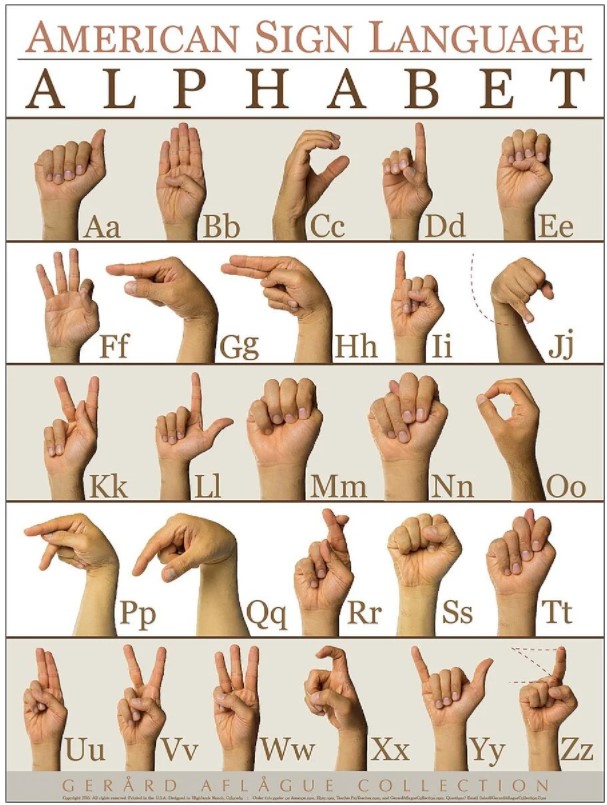
British, Australian and New Zealand Sign Language (BANZSL)
Sharing a sign language alphabet is British Sign Language, Australian Sign Language (Auslan) and New Zealand Sign Language. Unlike ASL, these alphabets use two hands, instead of one.
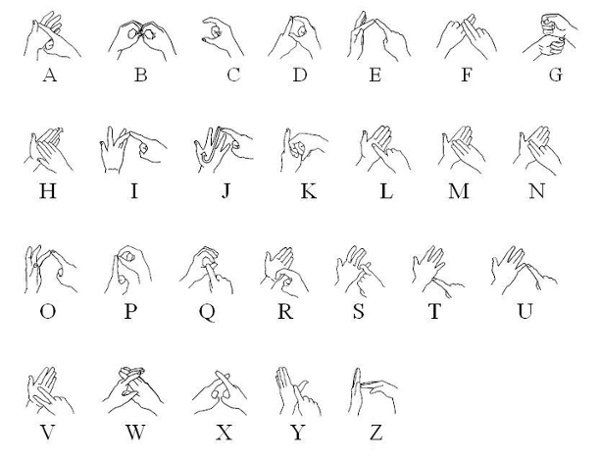
Chinese Sign Language (CSL)
Probably the most-used sign language in the world (but there is currently no data to confirm this), Chinese Sign Language uses the hands to make visual representations of written Chinese characters. The language has been developing since the 1950s.
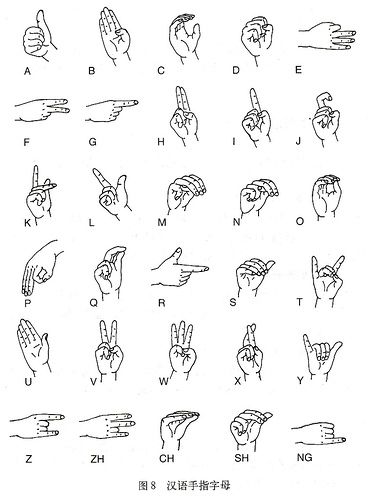
French Sign Language (LSF)
French Sign Language is similar to ASL – since it is in fact the origin of ASL – but there are minor differences throughout. LSF also has a pretty fascinating history.
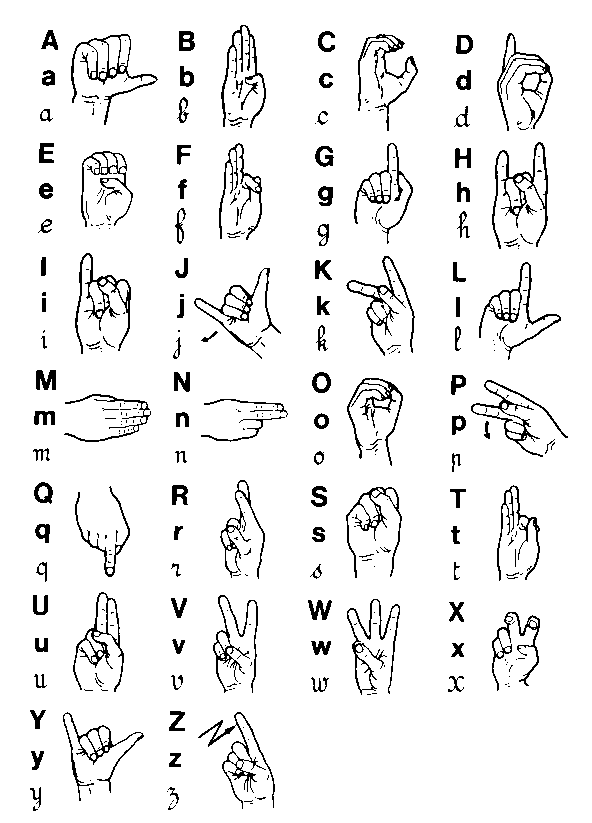
Japanese Sign Language (JSL) Syllabary
The Japanese Sign Language (JSL) Syllabary is based on the Japanese alphabet, which is made up of phonetic syllables. JSL is known as Nihon Shuwa in Japan.
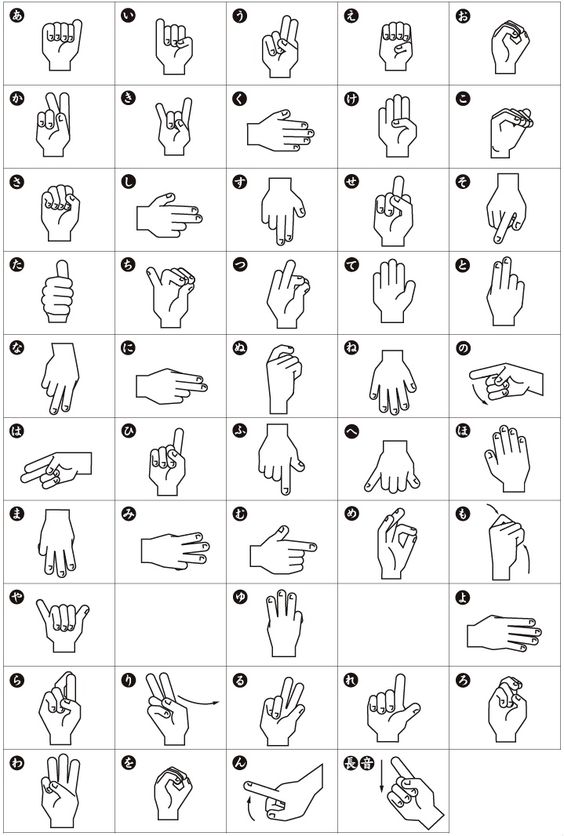
Arabic Sign Language
The Arab sign-language family is a family of sign languages across the Arab Mideast. Data on these languages is somewhat scarce, but a few languages have been distinguished, including Levantine Arabic Sign Language.

Spanish Sign Language (LSE)
Spanish Sign Language is officially recognized by the Spanish Government. It is native to Spain, except Catalonia and Valencia. Many countries that speak Spanish do not use Spanish Sign Language! (See Mexican Sign Language below, for example.)

Mexican Sign Language (LSM)
Mexican Sign Language (‘lengua de señas mexicana’ or LSM) is different from Spanish, using different verbs and word order. The majority of people who use Mexican Sign Language reside in Mexico City, Guadalajara and Monterrey. Variation in this language is high between age groups and religious backgrounds.

Ukrainian Sign Language (USL)
Ukrainian Sign Language is derived from the broad family of French Sign Languages. It uses a one-handed manual alphabet of 33 signs, which make use of the 23 handshapes of USL.
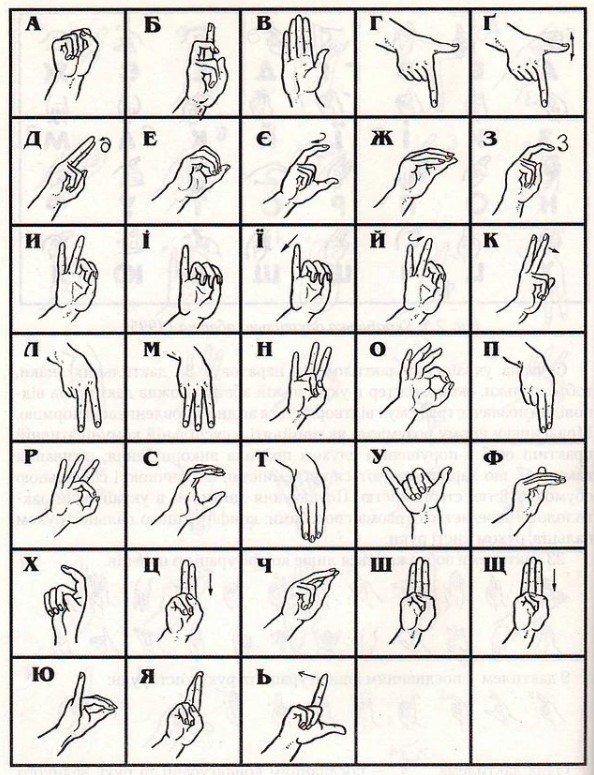
Plains Sign Talk (Indigenous to North America)
In North America, Plains Sign Talk (also known as Plains Sign Language) is an Indigenous sign language that was once used between Plains Nations to support trade, tell stories, conduct ceremonies, and act as a daily communication language for Deaf people. It was used between Nations across central Canada, the central and western United States and northern Mexico.
Watch the video below to see an example of signing used in First Nations cultures in North America.
Learn How to Fingerspell like a Pro
Once you’ve learnt how to fingerspell each letter of the alphabet, it’s time to polish your form! Check out these tips to improve your fingerspelling:
- Pause between spelling individual words. This improves the comprehensibility of your signing.
- Keep your hand in one place while spelling each word. This can take practice, but it makes it much clearer for others to read back. An exception to this is when you are fingerspelling an acronym. In this instance, move each letter in a small circle to let people know not to read the letters together as a single word.
- If you are fingerspelling a word that has a double letter, bounce your hand between those two letters to indicate the repetition of that letter. You can also do this by sliding the letter slightly to the side to indication it should be doubled. It can be difficult to not bounce between every letter when first learning to fingerspell. You can use your free hand to hold your write to help steady it while practicing. Eventually, you’ll get used to keeping your hand steady by itself while fingerspelling.
- Keep your fingerspelling hand at the height of your shoulder. This is the most comfortable position for your signing and the other person’s reading.
- Keep your pace consistent. There is no need to race through when spelling a word. It’s more important that each letter is clear, and the overall rhythm is consistent.
Thanks for reading! To find out more about Ai-Media and our accessibility services, visit our website or get in touch with our friendly team.








